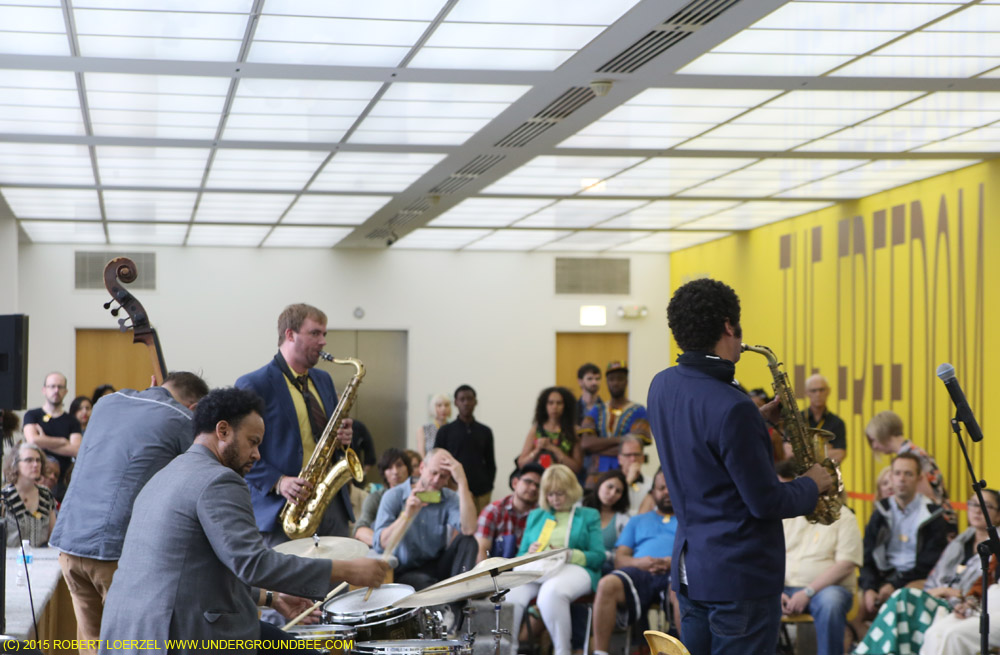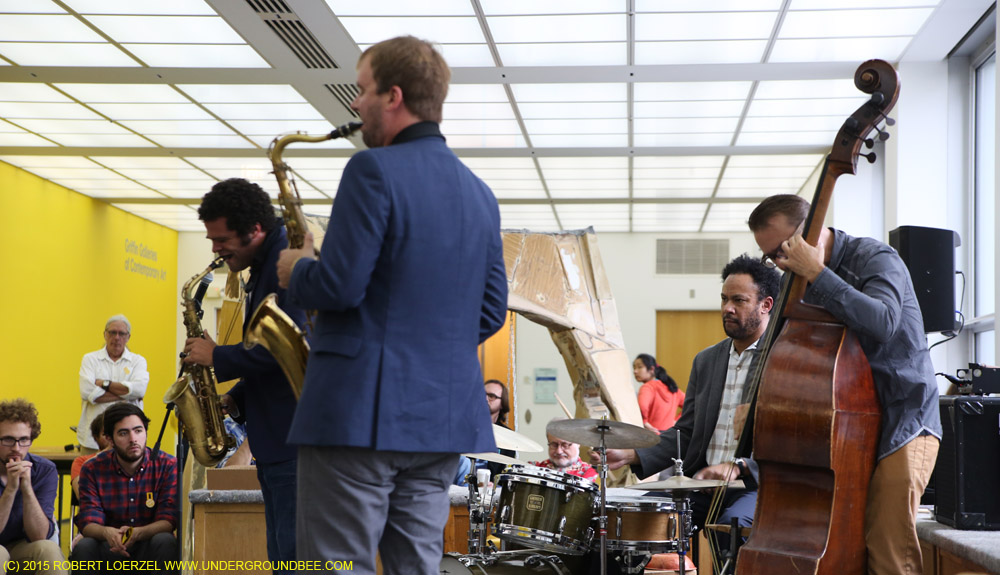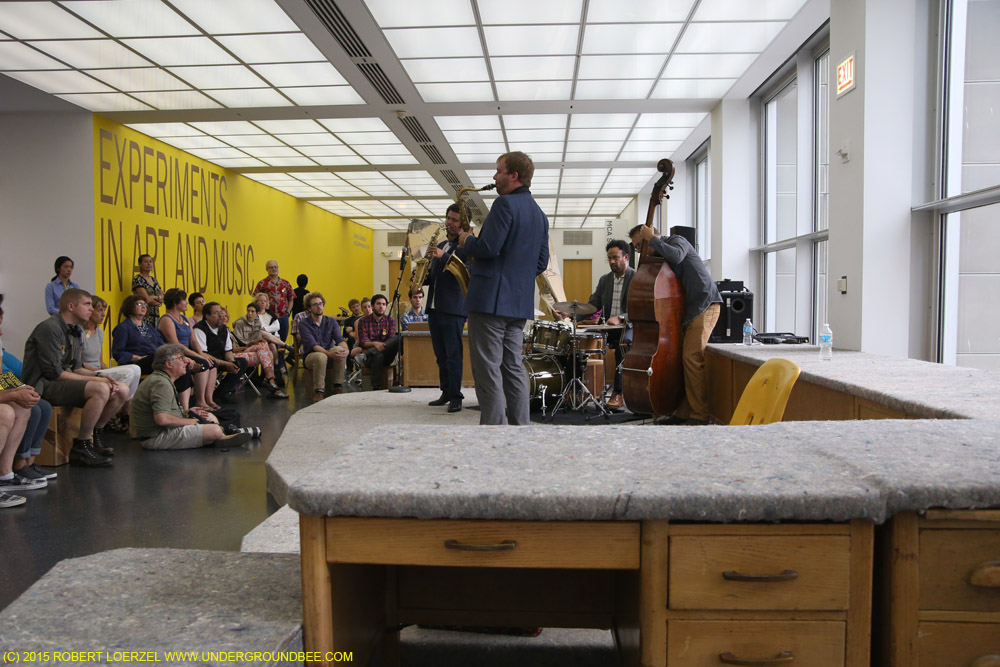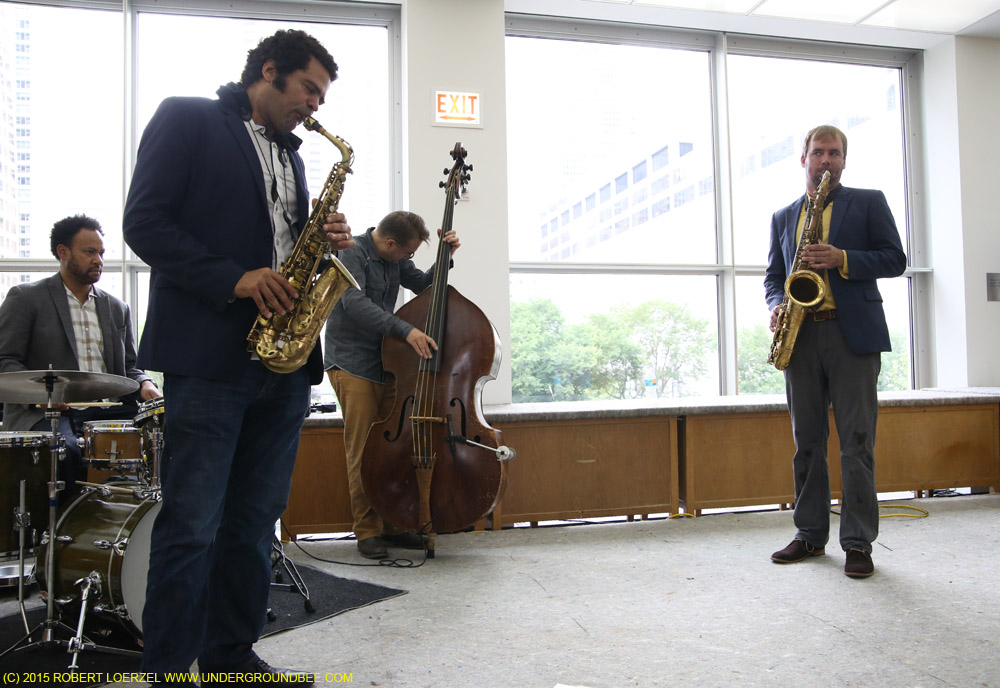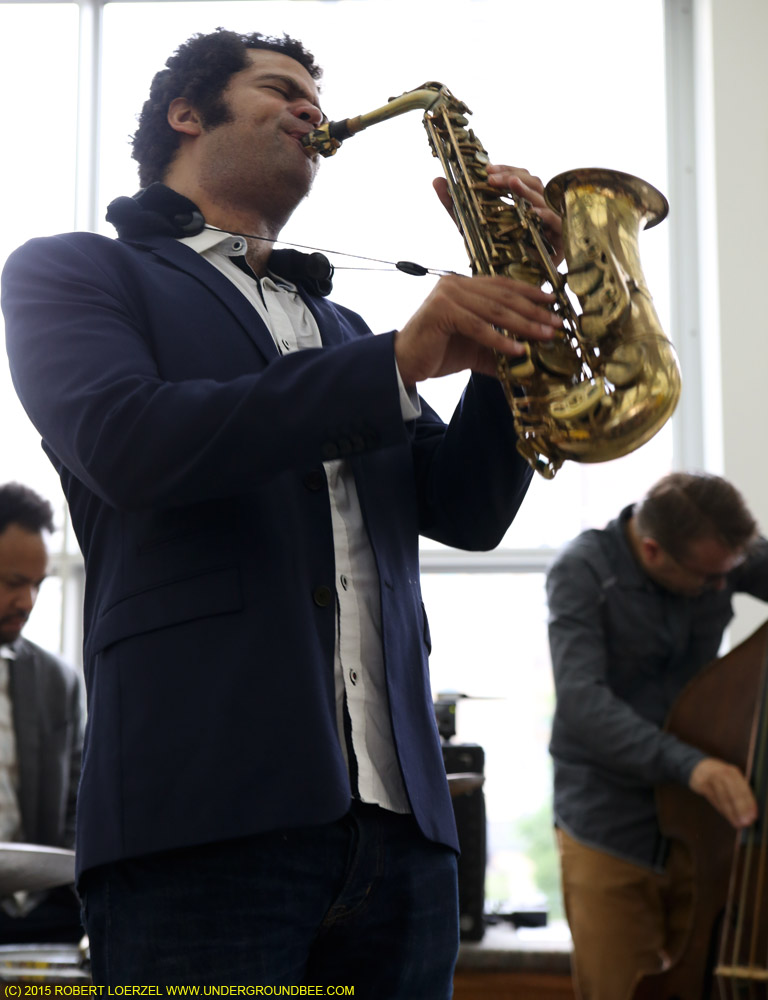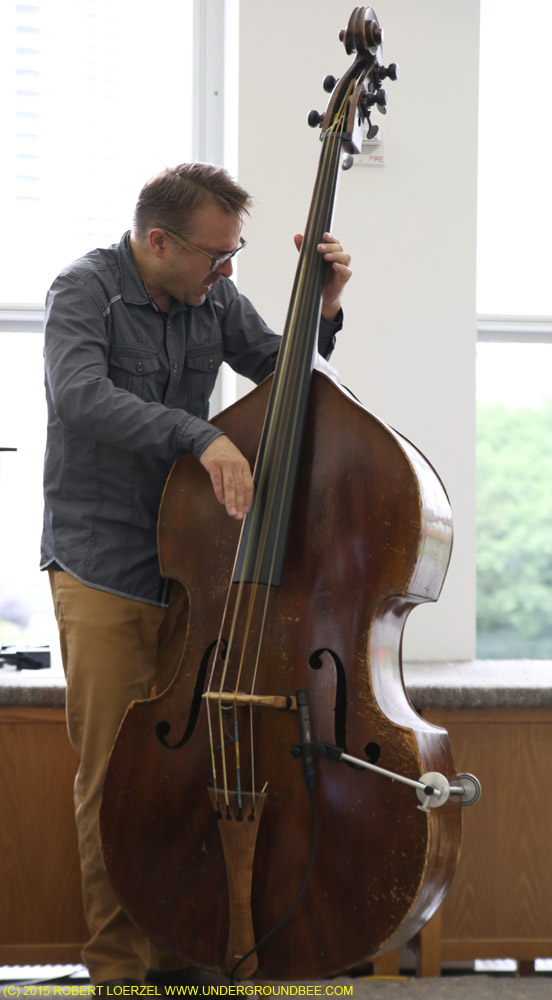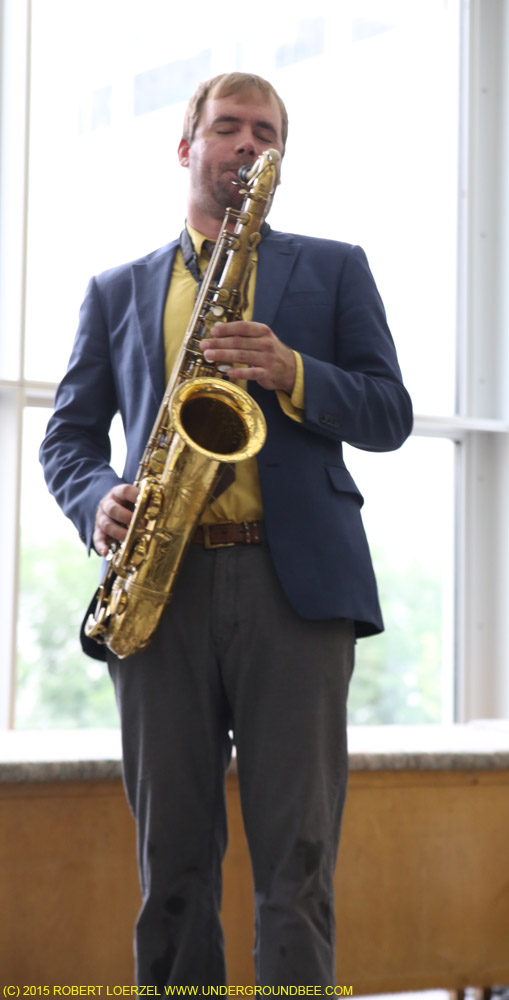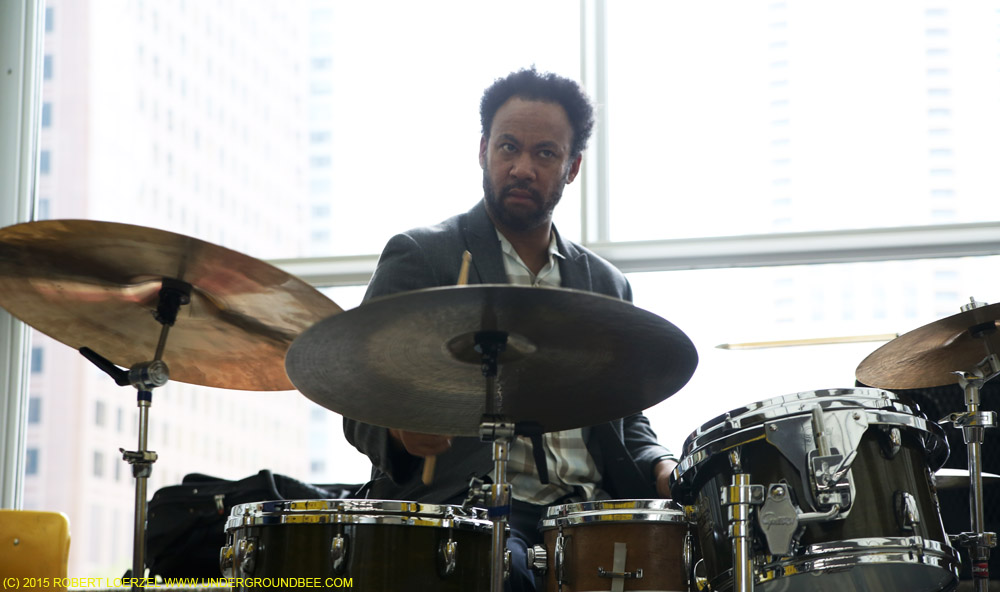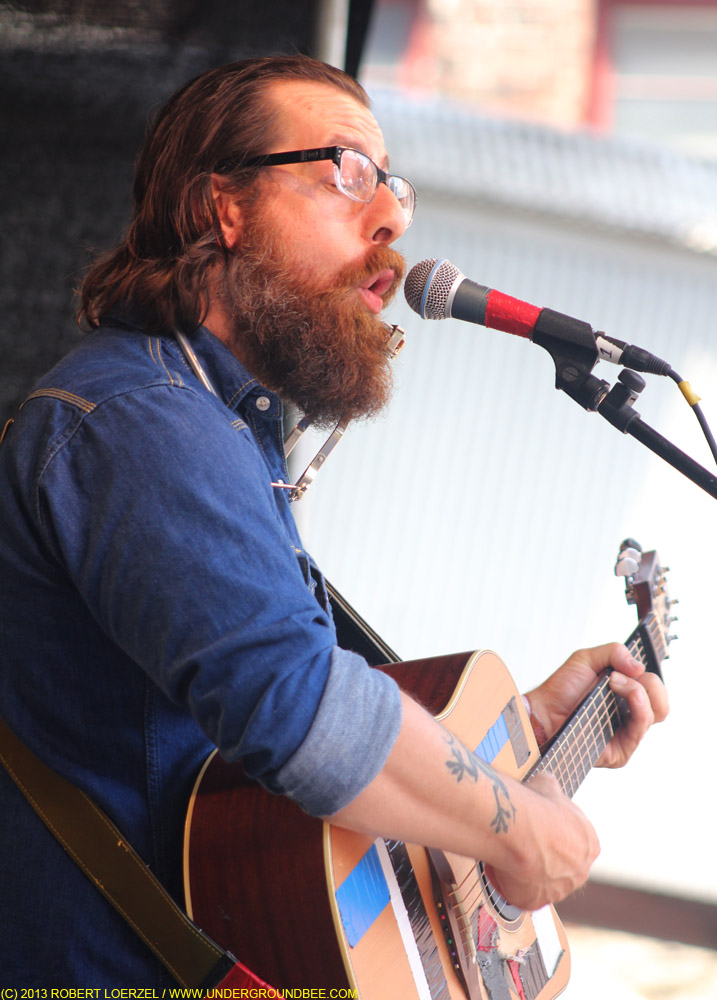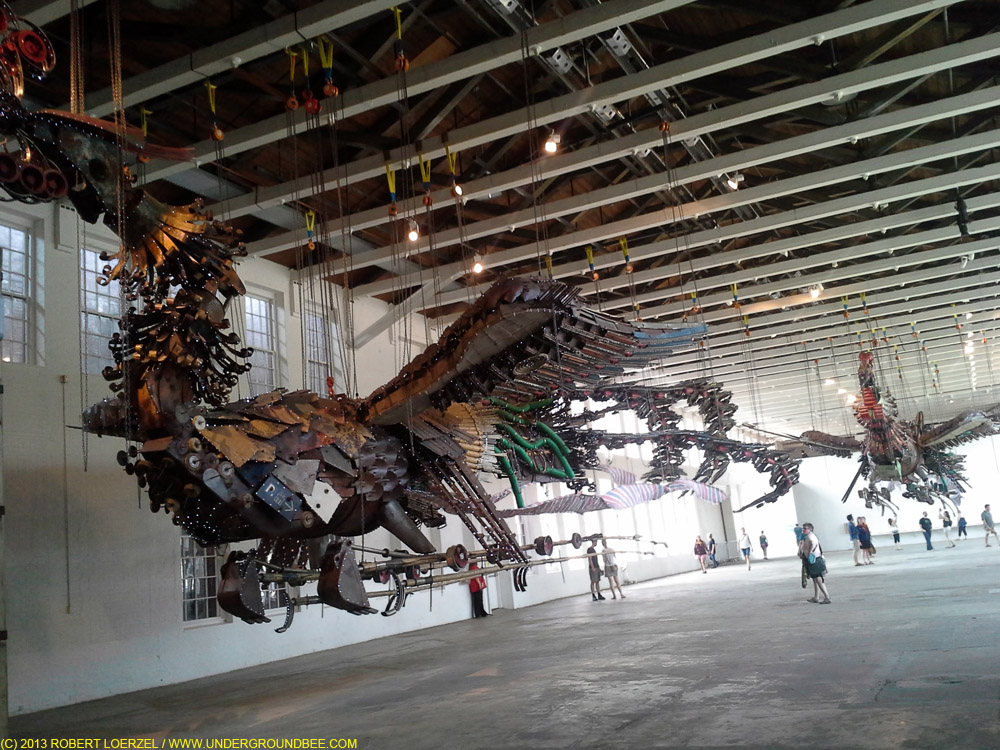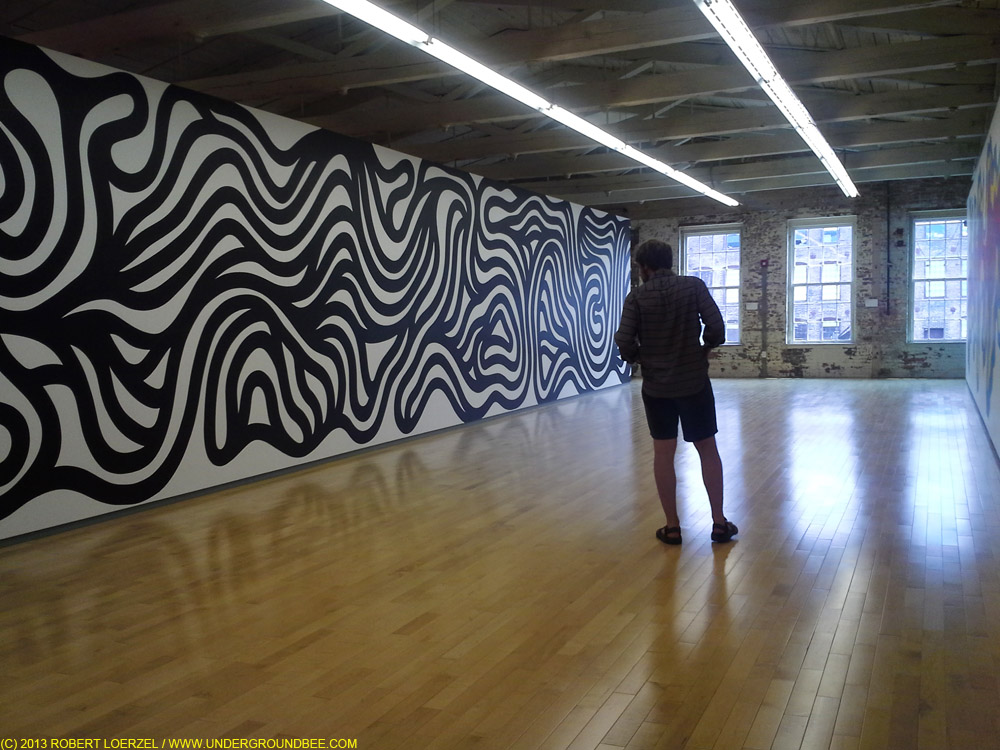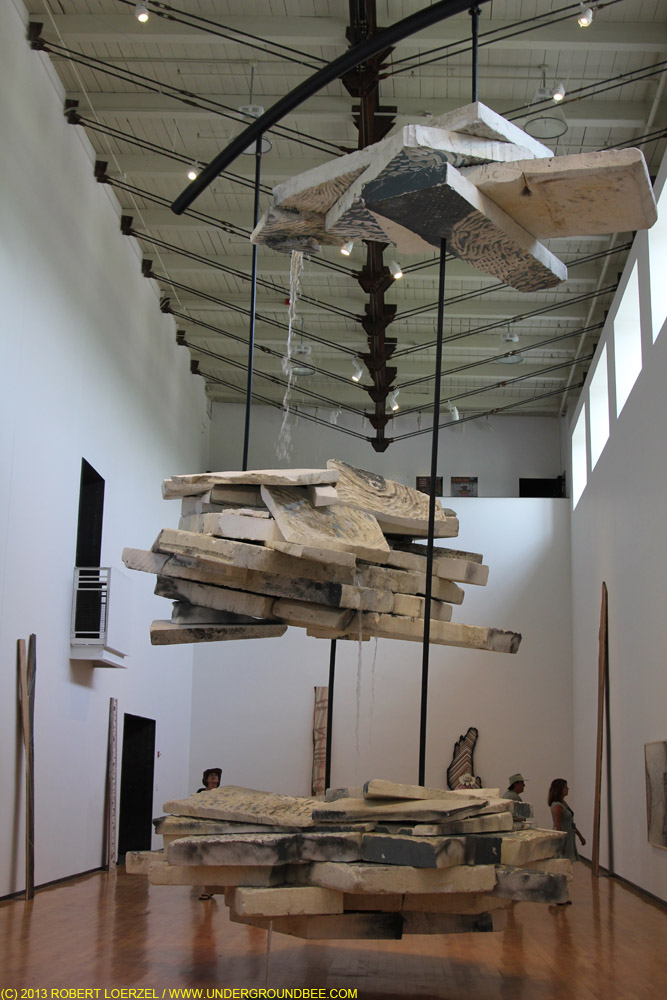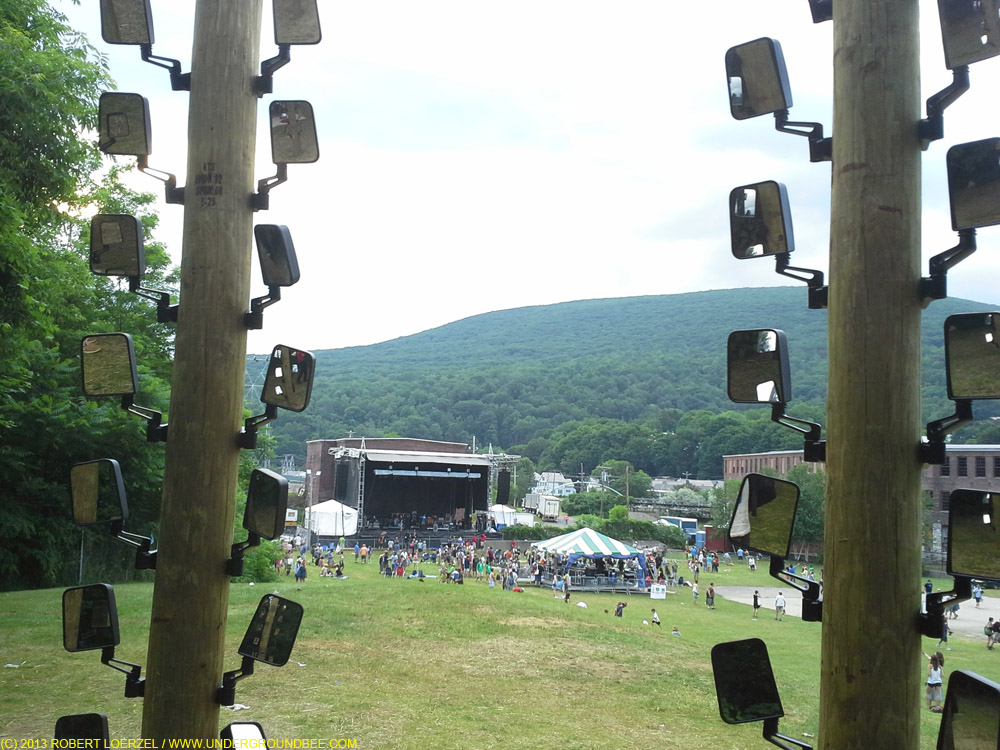In 1965, a collective of African-American jazz musicians and artists in Chicago formed the Association for the Advancement of Creative Musicians, a group that pushed the boundaries of jazz and sparked creativity in other artistic realms, including the visual arts. The group’s 50th anniversary has prompted celebrations and retrospectives this year, including an exhibit showing through Nov. 22 at the Museum of Contemporary Art Chicago called “The Freedom Principle: Experiments in Art and Music, 1965 to Now.”
The show is an interesting hybrid. It includes archival posters, photographs and mementos from the AACM and related jazz musicians, as well as the visual art they created. But it also features the work of contemporary artists inspired by the AACM and its legacy — such as the day-glo geometric patterns of Lisa Alvarado, an artist and musician who plays in Johsua Abrams’ Natural Information Society. Alvarado’s banners are on the band’s album covers (including the excellent recent release Magnetoception) and they hang behind the group as its performances. Also featured are some of Chicago artist Nick Cave’s Soundsuits. Highlights of the archival items include Art Ensemble of Chicago bandleader Roscoe Mitchell’s incredibly elaborate drum set.
AACM founding member Phil Cohran performed in the MCA’s fourth-floor space next to the exhibit on July 10, when the museum hosted a press opening — I am belatedly posting my photos now from that event. On the following day, July 11, the MCA opened its doors to the public for free as the exhibit opened, and several musicians performed, including Mike Reed with his group People, Places + Things. Over the next few months, the MCA will host more performances and events related to the exhibit; see the MCA’s website for details.
The Freedom Principle
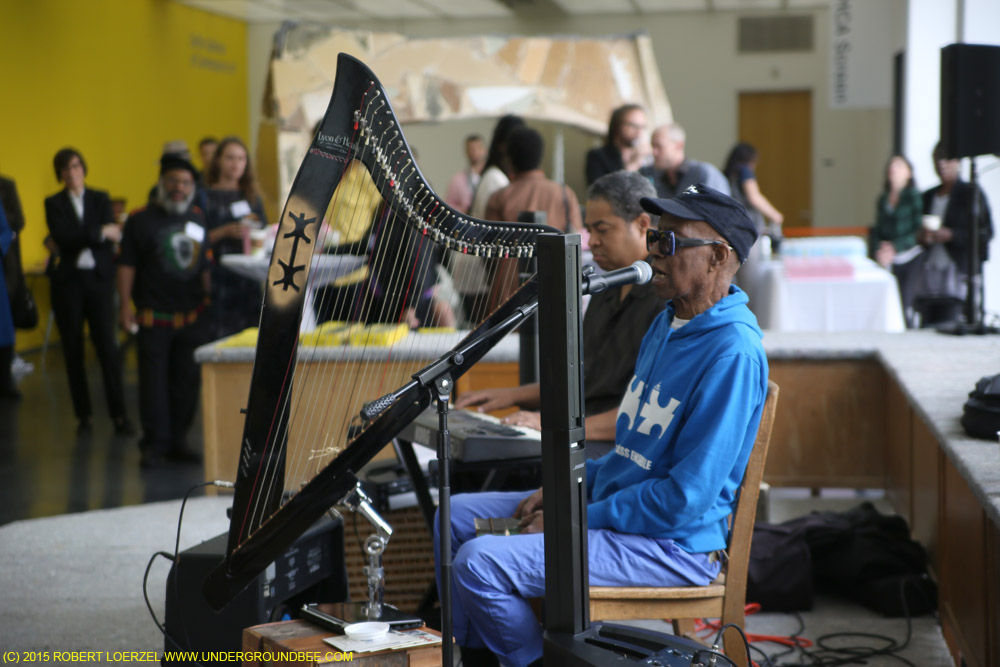
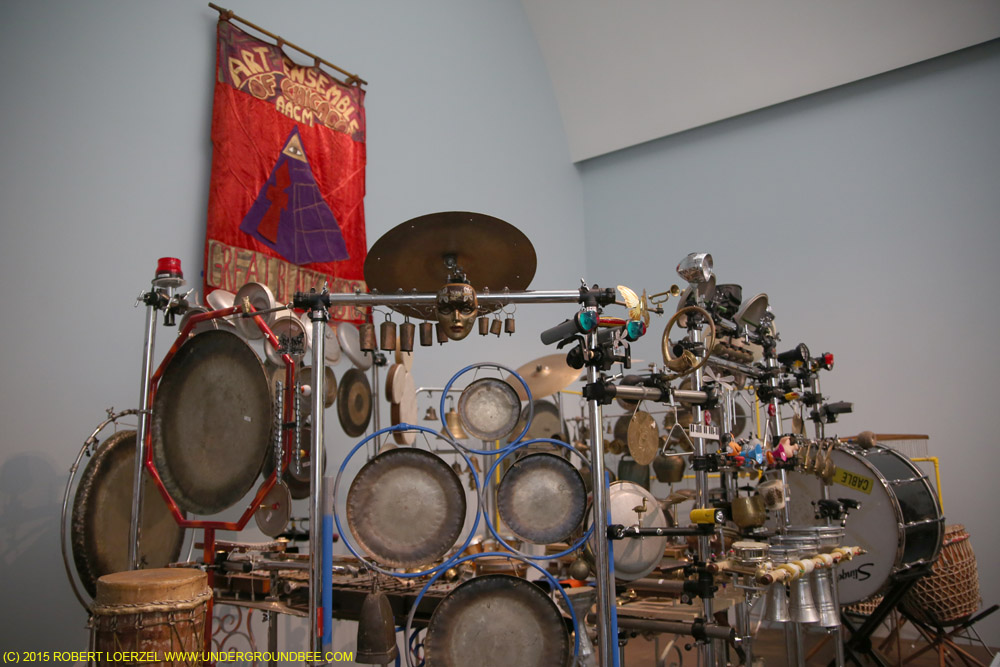
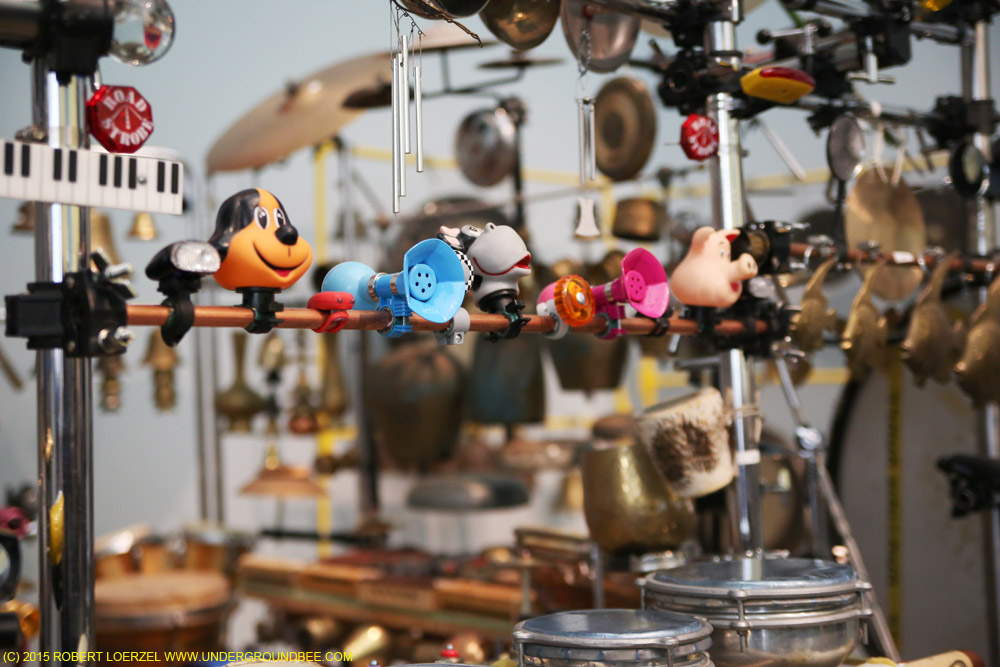
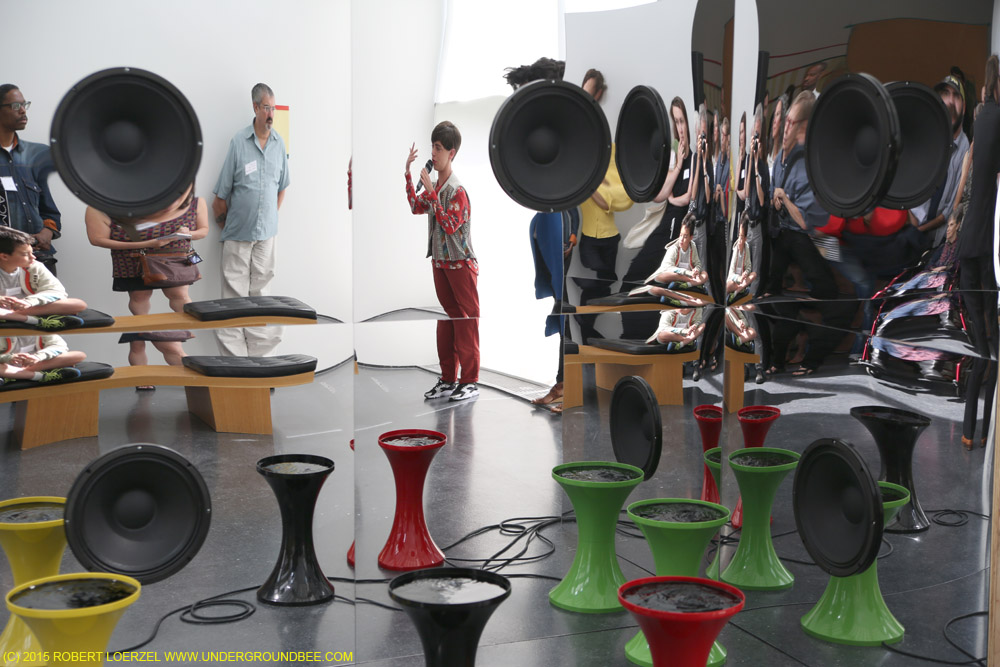
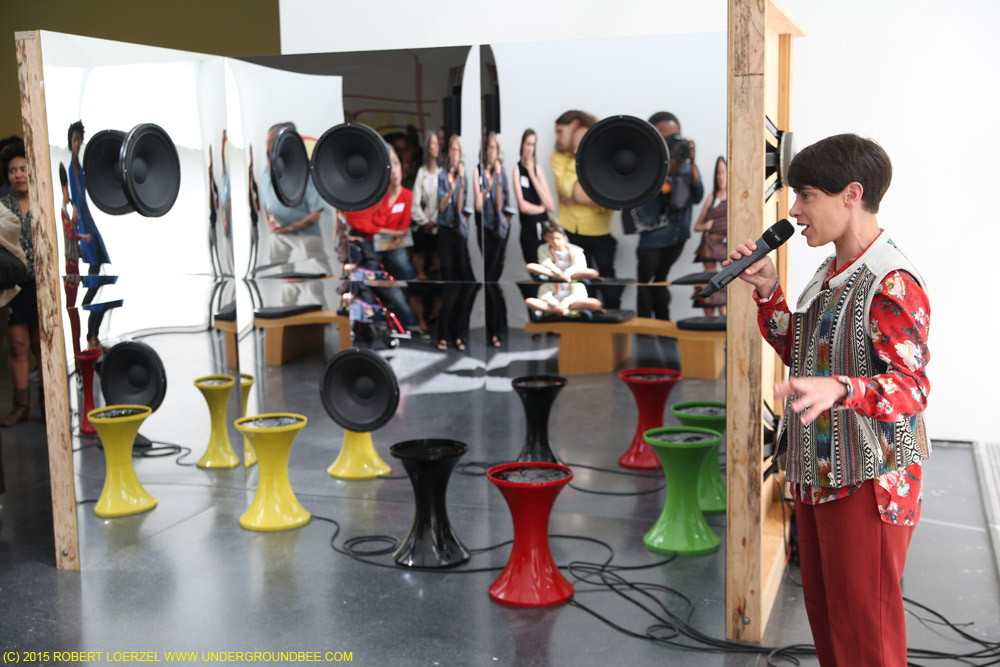
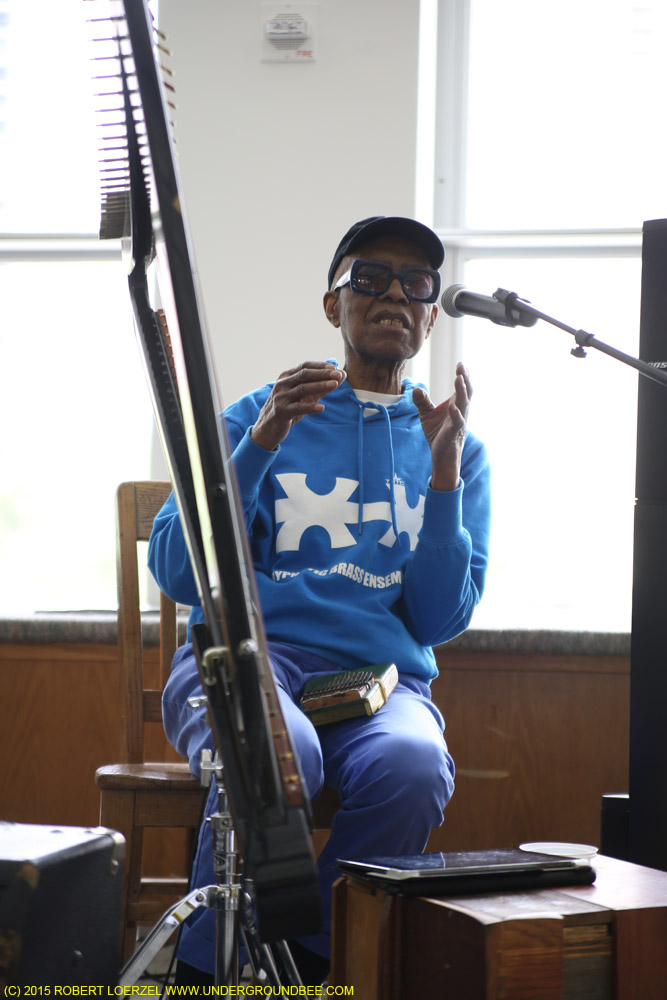
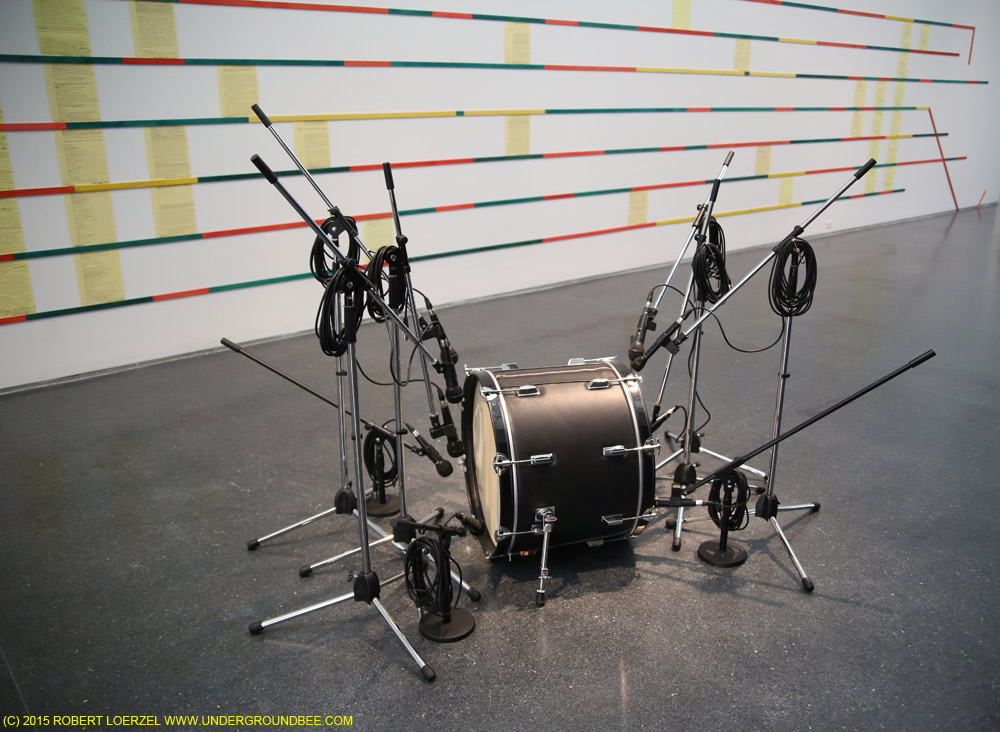
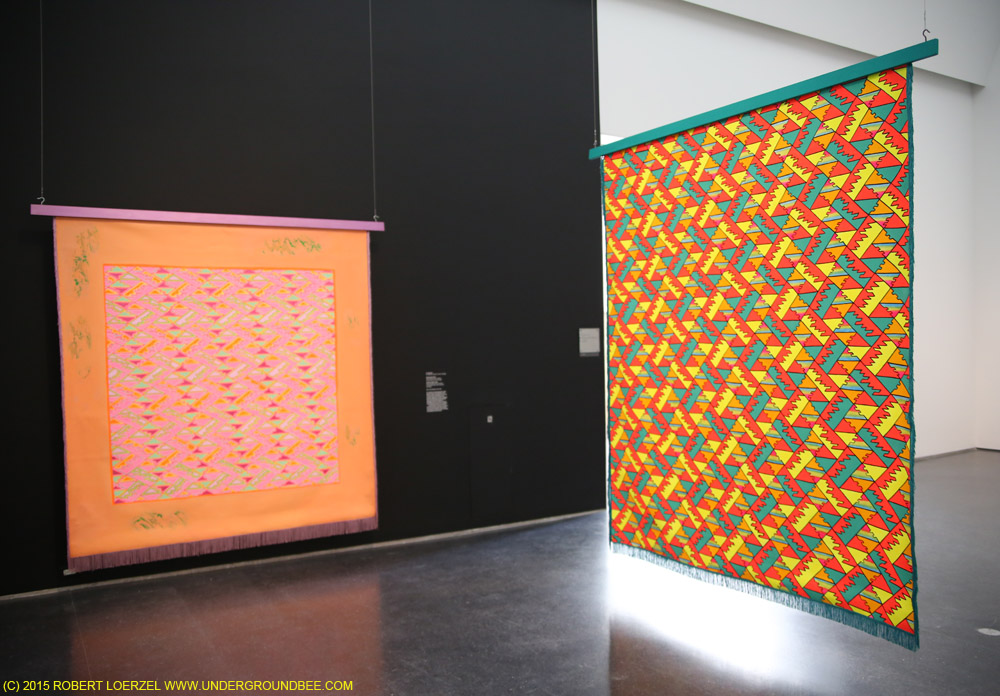
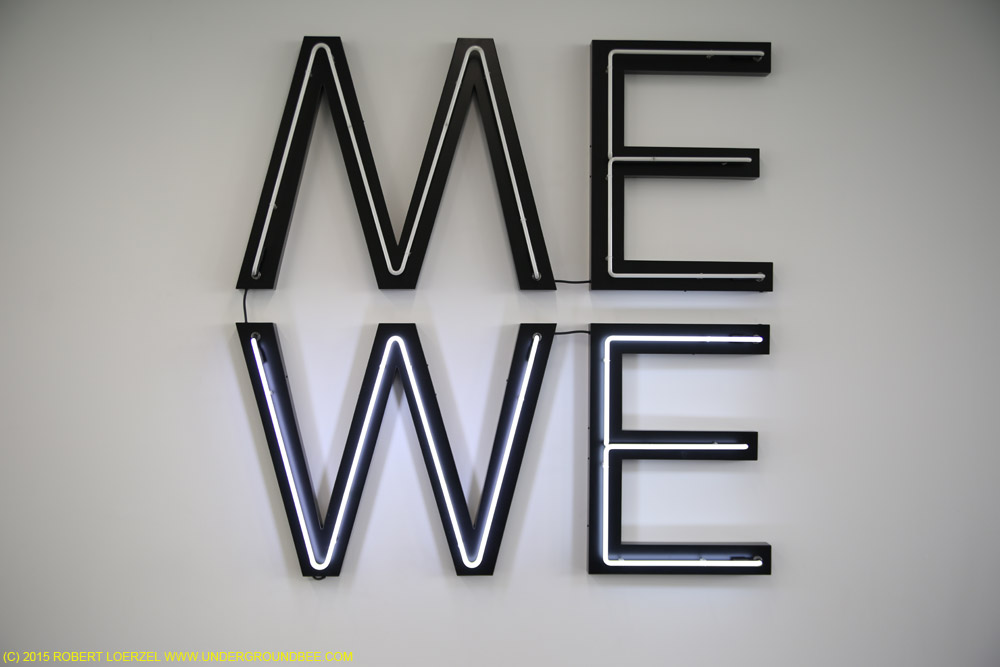
Mike Reed’s People, Places and Things
Performing July 11 at the MCA.
